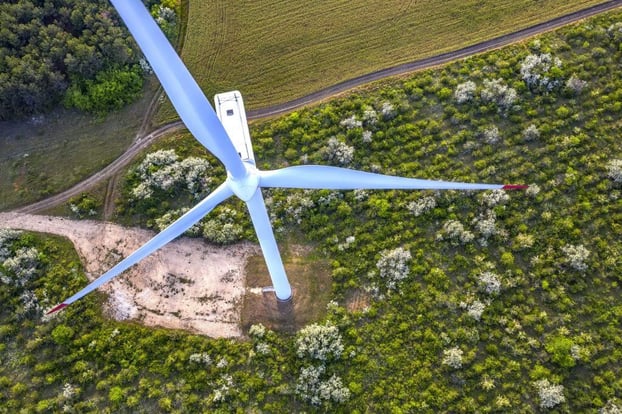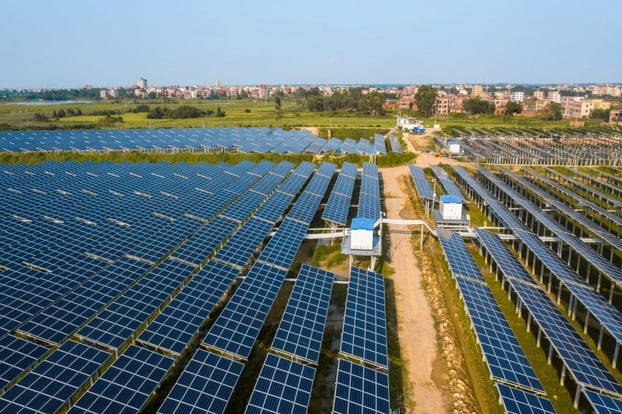[ARTICLE 4] TOOLS AND INFORMATION OPERATORS NEED TO MONITOR AND MAINTAIN STORAGE ASSETS – PART II
Read on for insights on tracking key BESS operating parameters, regulatory and commercial monitoring, and equipment monitoring and safety.

Stay in touch
Subscribe to our newsletter for expert insights, company updates, and the latest in renewable energy management solutions.
This article is article four of a seven-part series on energy storage systems where we explore the questions we should be asking, the assumptions we should be validating and the things we should be monitoring to ensure the successful deployment of this important new asset class participating in the global electric grid.
This article continues the discussion we started in Part I which covered insights gathered from operators about the kinds of monitoring and decision-support tools they are looking for in managing the long-term performance of energy storage systems.
Part I covered warranty and performance monitoring, including warranty parameter tracking, module and unit temperature monitoring and performance guarantee tracking. In case you missed it, here’s a link to last week’s article on energy storage.
Today, for Part II, we’ll dig into:
- Tracking other key BESS operating parameters
- Regulatory and commercial monitoring
- Equipment monitoring and safety
Again, I would like to thank Michael Eyman and Josh Corbitt of Origis Services and Ken Kim of Origis Energy for their expertise and contributions to these articles. Origis is a leader in operating and maintaining solar and energy storage systems throughout North America.

TRACKING OTHER KEY BESS OPERATING PARAMETERS
To stay within the warranty terms of the battery system, the OEM will specify equipment limits that must be maintained – the “operating envelope” of the system. Because the battery OEM usually does not control the downstream limits of the system specified by the system integrator, project developer or scheduling coordinator, it is important that the operator is aware of the OEM limits and ensures operations stay within the original operating envelope if the warranty is to be maintained.
STATE-OF-CHARGE (SOC)
The battery system should be delivered with hardwired state-of-charge (SOC) upper and lower control limits for safety and longevity purposes, but the battery manufacturer may recommend intermediate SOC ranges or define the warranty limits using the average module or system SOC.
The operator will want to monitor these battery system parameters, including charge and discharge energy levels, who is dispatching the system and at what setpoints. An SOC report should be configured in the APM to automatically calculate the average and module-level SOC as well as minimum and maximum setpoints for the reporting period.
CYCLING RATE (C-RATE)
C-rate, or cycling rate (charges or discharges per hour), is a measure of the rate at which a battery is being charged or discharged. The more aggressively a battery is cycled, the shorter its life. Like other warranty parameter tracking, setting up a report to capture the start and end point power rating of each battery cycle, as well as the duration and quantity of the cycles, and then calculating the C-rate from this data will save the operator a lot of time.
Various analyses should be done relative to the warranty parameters, such as average and maximum C-rate for the reporting period and inception-to-date. The warranty may allow operations with a short-term C-rate that exceeds cumulative or annual, so it is important that all parameters are included in the report and automated events are generated by the APM whenever instantaneous C-rates are exceeded.

BATTERY LIFE ASSESSMENT
Because the Li-ion battery system asset class is so young, most battery life assessment work is theoretical. Therefore, we are dependent on researchers and manufacturers to provide estimates of battery economic life. Other than infant mortality issues during system commissioning, batteries are highly reliable systems.
Nevertheless, how they are operated (rate of cycling, temperature, average SOC, etc.) can quickly and dramatically affect their useful life. Therefore, it is the responsibility of the operator to monitor battery system performance and advise all stakeholders on the status of key performance indicators relative to nominal and warranty conditions, including an assessment of the battery’s life.
Manufacturers usually quote battery life on the time period under warranted operation for the system to degrade to 60-80% of its nominal capacity. BESS operations are really about optimally scheduling the unit into the market in a safe and reliable manner to maximize the profit of the project.
For plants under a capacity contract, this can be fairly simple to do. For plants in a merchant market, this can be very difficult to do because cash flows will be based on forecasted price strips under various operating scenarios that will deliver a different estimated economic life for the battery system. Therefore, it is very important that operators and asset managers work closely together with full transparency of data to coordinate optimal lifetime use of the asset.
REGULATORY AND COMMERCIAL MONITORING
In addition to warranty and performance guarantee monitoring and reporting requirements, there are a few other compliance items that operators will want to keep an eye on for the battery systems they manage: ITC tracking, dispatch parameters vs. design parameters, and PPA dispatch vs. design parameters.
ITC TRACKING
Hybrid systems (solar or wind plus storage) are required to self-source between 80 and 100% of the auxiliary loads of the facility to meet the investment tax credit (ITC) requirements from project financing. This means no more than 19% of the parasitic loads of the facility and BESS can be supplied by the electric grid or the ITC benefits could be compromised. Operators must use the APM to carefully track the following parameters over the ITC period:
- Aux load consumption supplied by the grid
- Aux load consumption supplied by the renewable power facility supply
- Total aux load energy consumption
DISPATCH PARAMETERS VS. DESIGN PARAMETERS
OEM and pass-through warranties (and economic life) are based on operating energy storage systems per specific design parameters. Typically, this includes tracking battery system SOC, C-rate, unit temperature, cumulative charge/discharge cycles and other parameters per the supply agreement design parameters.
Operating the system outside this specification envelope could void the warranty and/or materially impact system life. The asset manager might consciously dispatch the unit outside of the parameters of the initial design specifications because the tolling agreement has ended and the economics of dispatching into a merchant market dictate an entirely different operating regime.
Regardless of the reason, the operator will do well to use the electronic operating log to record time-stamped records of material changes in the operating strategy of the asset such as why the request was made and who authorized the change. This can help navigate future liability questions should the BESS experience meaningful changes in its economic life or operating costs.

PPA DISPATCH VS. DESIGN PARAMETERS
The operator will also want to ensure that monitoring trends and reports are configured in the APM to track actual BESS operation relative to the setpoint scheduled by the offtaker in a tolling agreement. The tolling agreement may allow the offtaker to dispatch the unit for capacity, energy or ancillary services to support grid operations.
The agreement will specify certain response parameters from the unit such as ramp rate (MW/min), response time (how quickly the unit responds to load setpoints) or energy shaping for hybrid systems. If the required control and regulation parameters are not met by the BESS, penalties or even contract breach may result.
EQUIPMENT MONITORING AND SAFETY
As with all new asset classes, Li-on energy storage systems have had their issues. Likely the most problematic have been an early rash of “thermal runaway” events that have put people and property in danger.
To address this problem, new sensors and fire suppression systems are being installed in most commercial and industrial deployments. The operator is responsible for monitoring module and system-level operating temperatures and gas levels to ensure safe operation of the equipment. New algorithms including machine learning will need to be developed to detect impending problems before thermal runaway does occur when unit damage is already happening.
APMs should employ condition-based maintenance technology and strategies that provide operators with early warnings of temperature excursions so operators can perform inspections and resolve issues before they create safety and property liability problems.
SUMMARY
We still have much to learn about the safe, reliable and economic operation of this new and very important energy asset class. The industry needs to equip owners and operators with the tools and information they need to safely and reliably manage this asset of today and tomorrow.
In our next article on BESS O&M, we will discuss with asset managers what kinds of tools and information they are asking for to manage the long-term performance of this new generation of energy storage systems. As always, your feedback is appreciated.
AUTHORS
- Steve Hanawalt is Executive Vice President and Founder of Power Factors, shanawalt@pfdrive.com
- Michael Eyman is Managing Director, Origis Services, Michael.Eyman@origisservices.com
- Josh Corbitt is Director of Business Development, Origis Services, Josh.Corbitt@origisservices.com
- Ken Kim is Head of Technology and Equipment Procurement, Origis Energy, Kenneth.Kim@origisenergy.com
Steve Hanawalt is EVP and founder of Power Factors. For more articles like this, follow him on LinkedIn or check out the rest of our blog.


.jpeg?width=2000&name=AdobeStock_691268307%20(3).jpeg)


